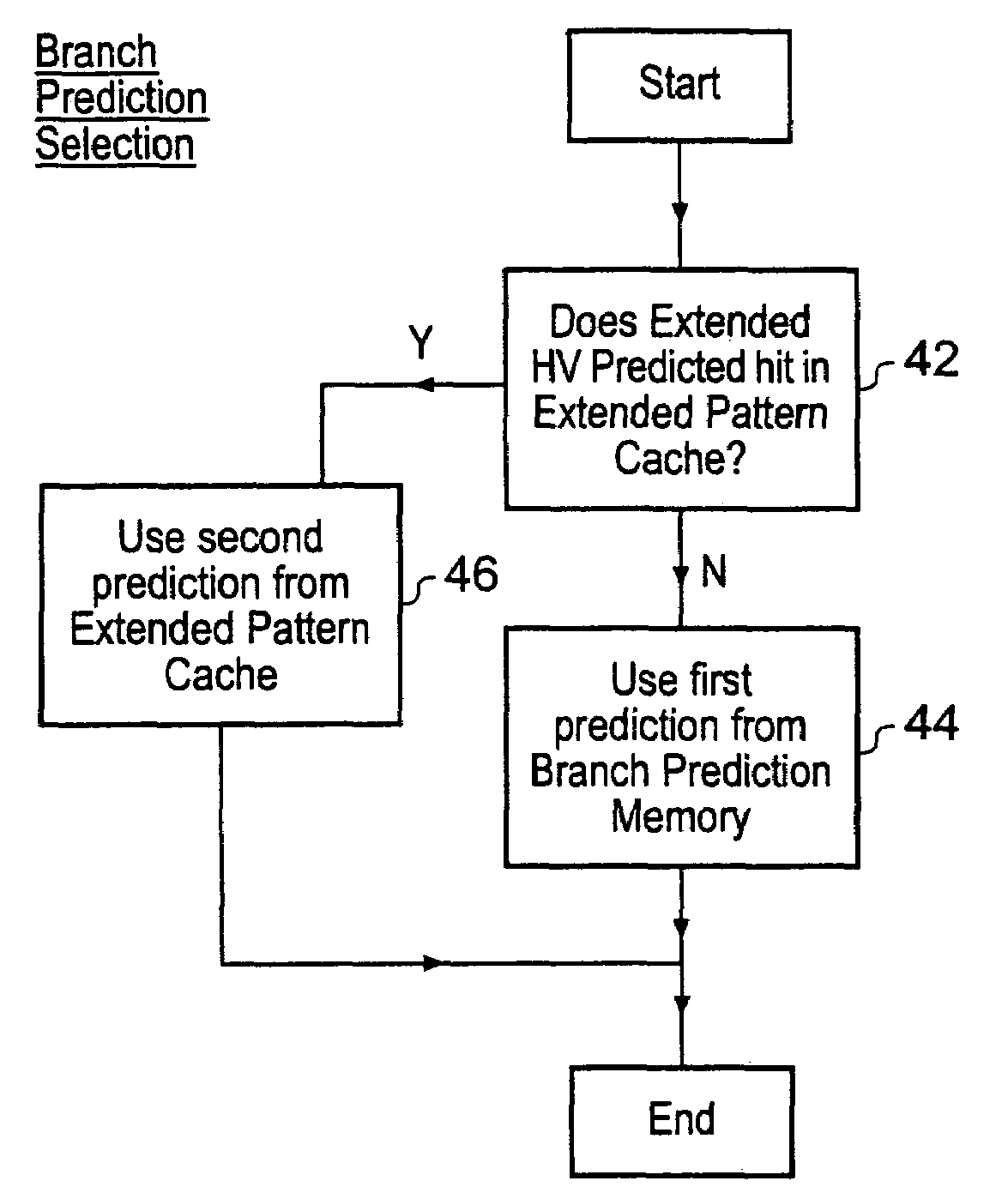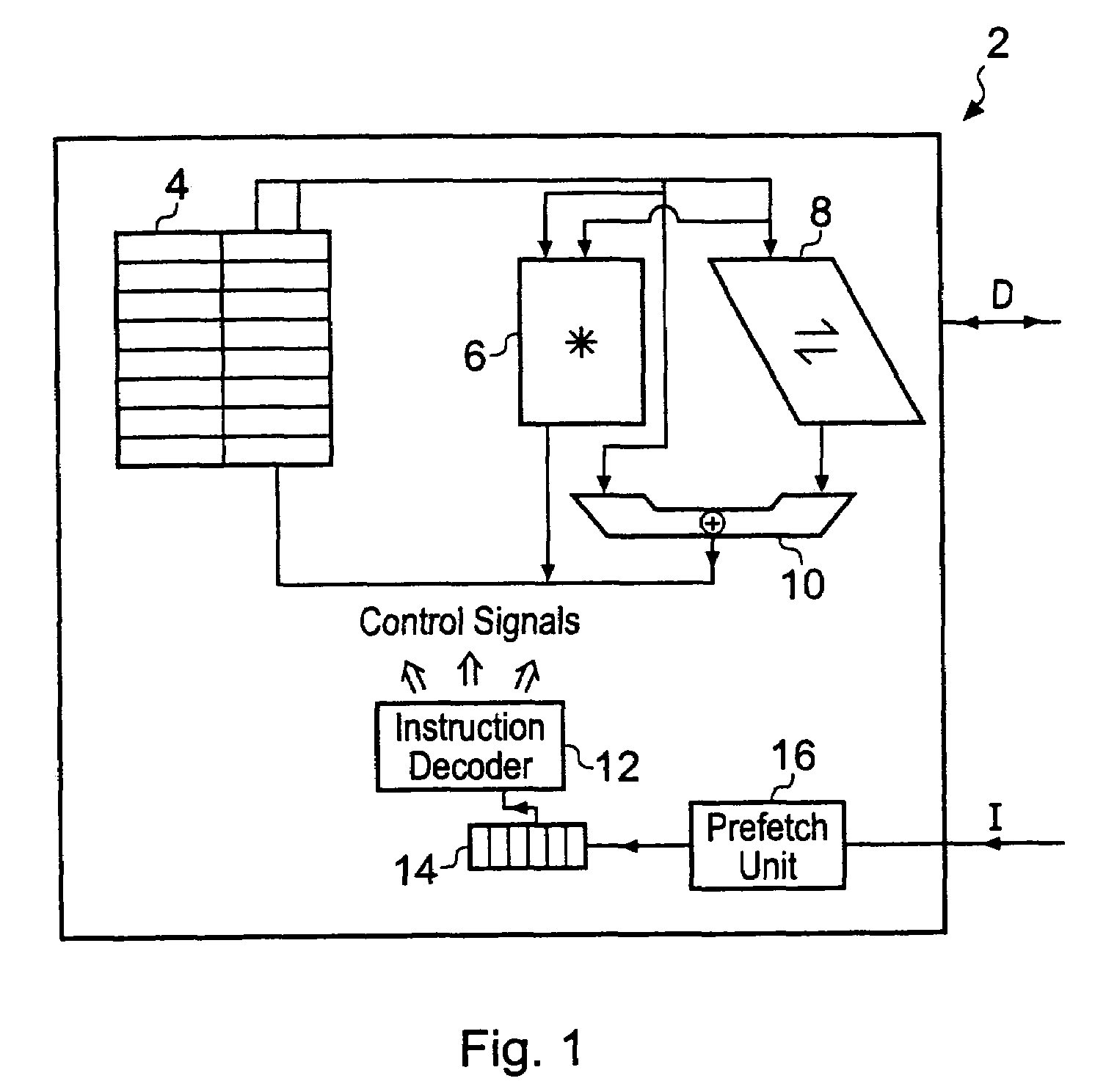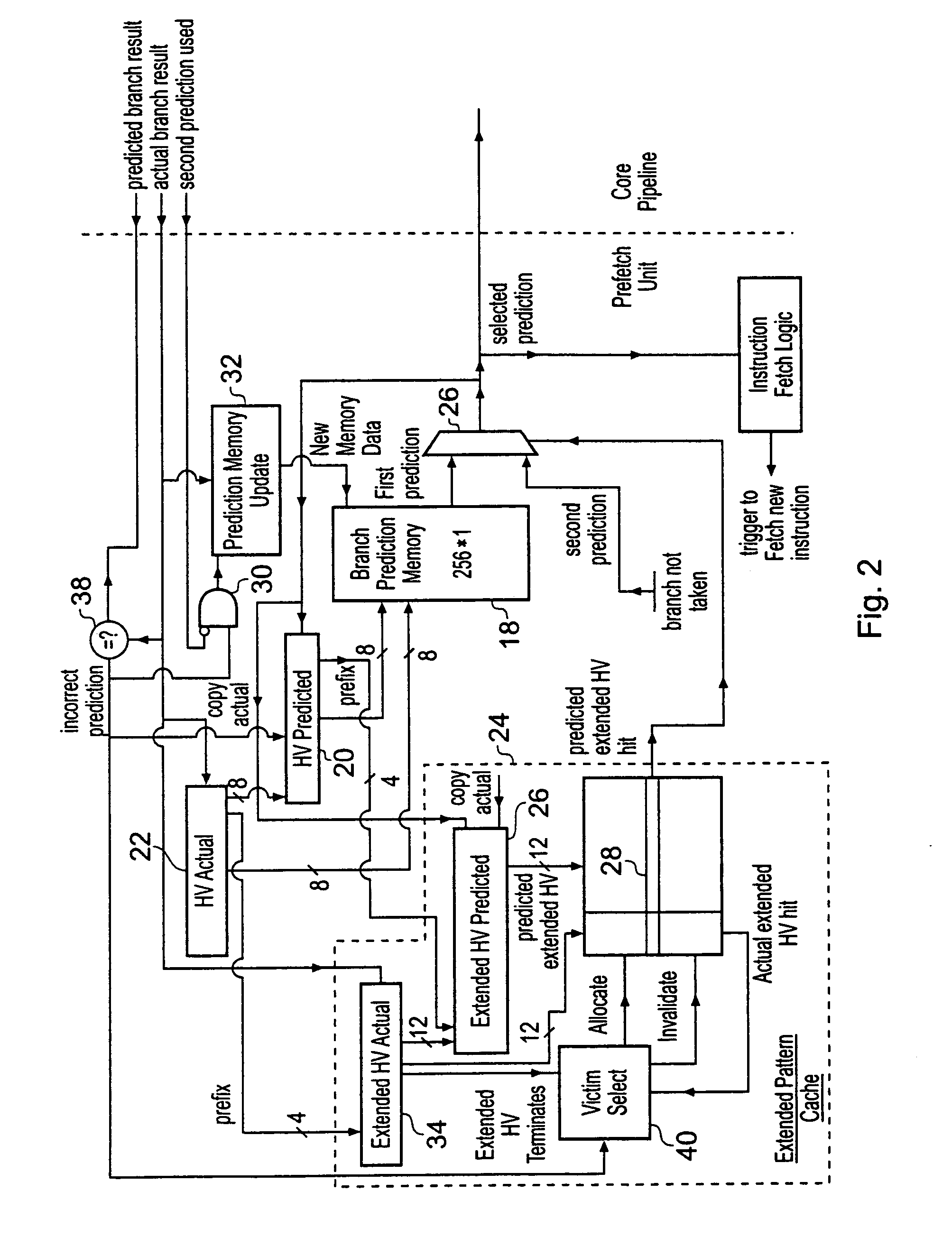Branch prediction mechanism using a branch cache memory and an extended pattern cache
a branch cache and pattern cache technology, applied in the field of data processing systems, can solve the problems of large increase in the size of the memory required to store the predicted outcomes for each of those possible, change of program flow, and inability to accurately identify the effect of the circui
- Summary
- Abstract
- Description
- Claims
- Application Information
AI Technical Summary
Benefits of technology
Problems solved by technology
Method used
Image
Examples
Embodiment Construction
[0042]FIG. 1 illustrates a data processing system 2, such as an embedded data processing core. The data processing system 2 as illustrated includes a register bank 4, a multiplier 6, a shifter 8, an adder 10, an instruction decoder 12, an instruction pipeline 14 and a prefetch unit 16. It will be appreciated that in practice the data processing system 2 will incorporate many more circuit elements. The circuit elements illustrated in FIG. 1 have been simplified and illustrate how instructions I are fetched by the prefetch unit 16 and then supplied to the instruction pipeline 14. Program instructions within the instruction pipeline 14 control an instruction decoder 12 which then generates control signals which configure the register bank 4, the multiplier 6, the shifter 8 and the adder 10 to perform desired data processing operations.
[0043]FIG. 2 schematically illustrates a part of the prefetch unit 12 that deals with branch prediction. This includes a branch prediction memory 18 whic...
PUM
 Login to View More
Login to View More Abstract
Description
Claims
Application Information
 Login to View More
Login to View More - R&D
- Intellectual Property
- Life Sciences
- Materials
- Tech Scout
- Unparalleled Data Quality
- Higher Quality Content
- 60% Fewer Hallucinations
Browse by: Latest US Patents, China's latest patents, Technical Efficacy Thesaurus, Application Domain, Technology Topic, Popular Technical Reports.
© 2025 PatSnap. All rights reserved.Legal|Privacy policy|Modern Slavery Act Transparency Statement|Sitemap|About US| Contact US: help@patsnap.com



